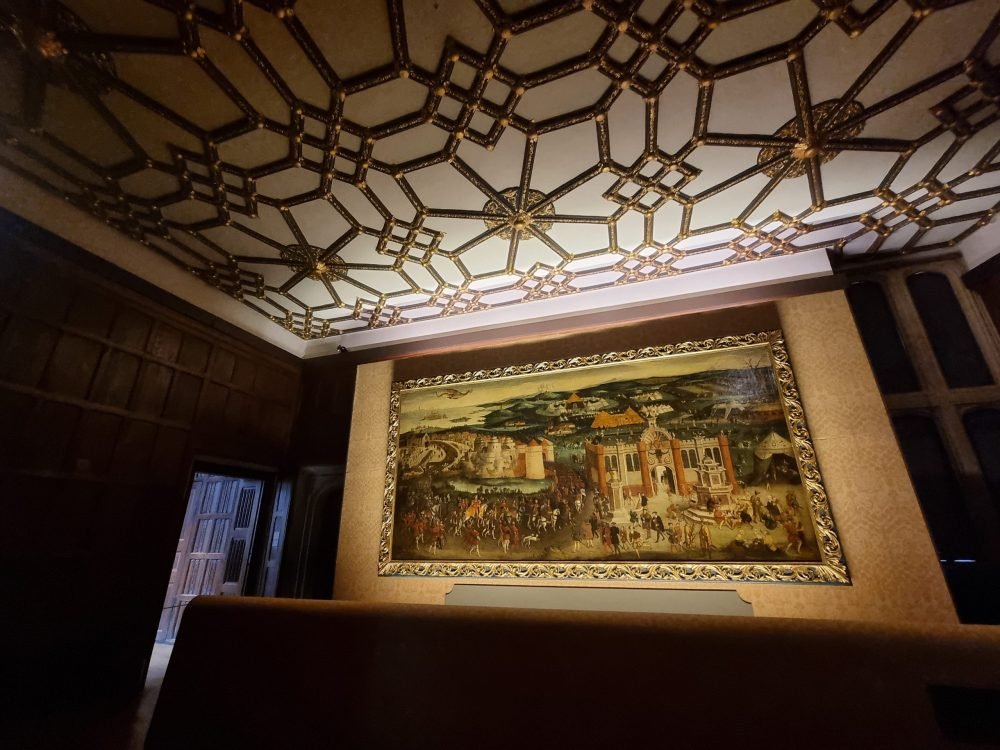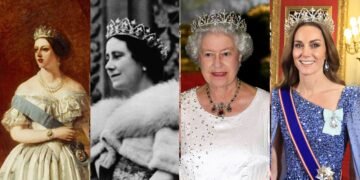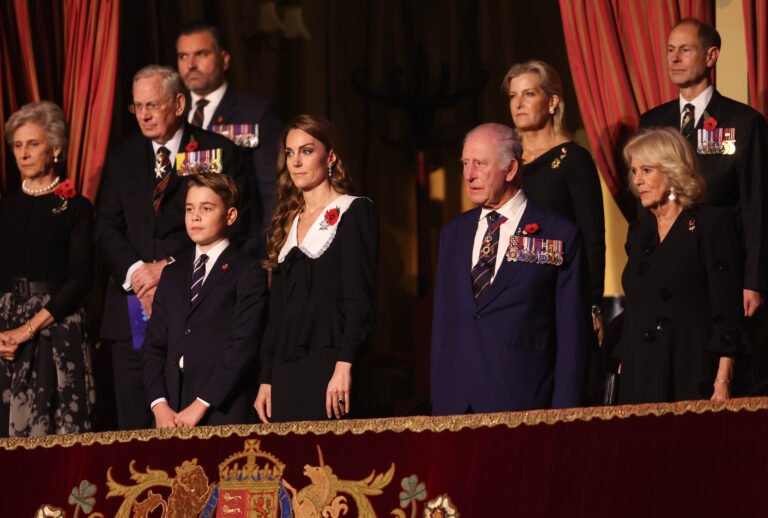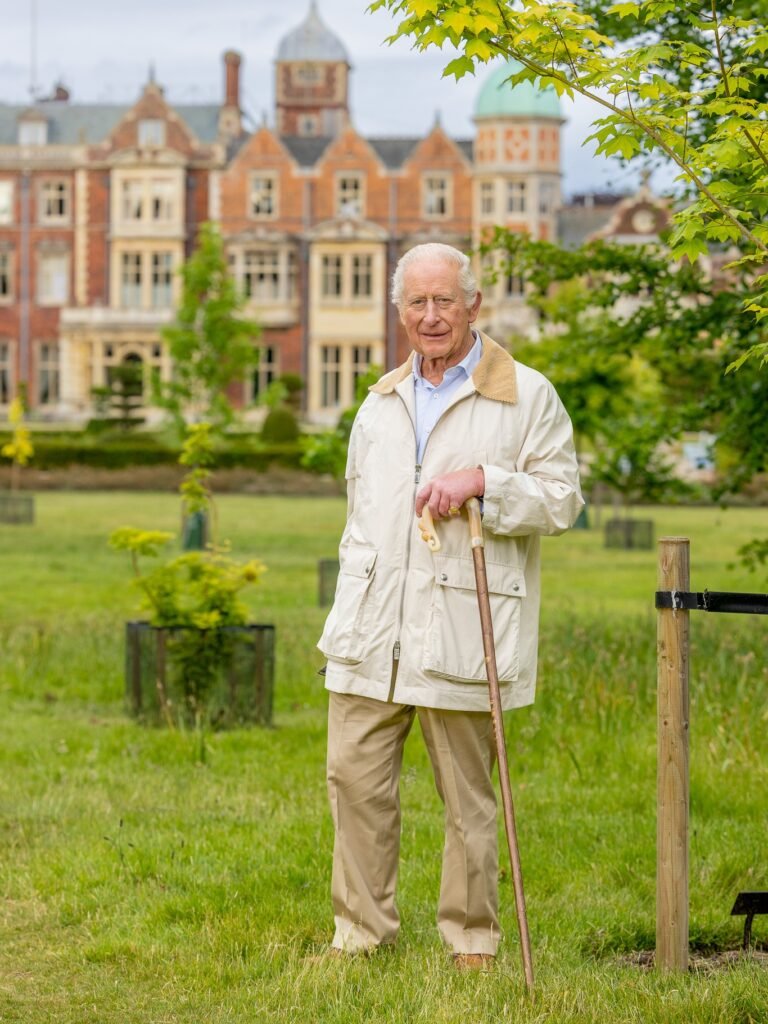One of the most opulent events during the reign of Henry VIII was that of the Field of the Cloth of Gold. The English King met his French counterpart in northern France for 18 days of lavish entertainment as a symbol of ongoing friendship and peace.
Henry VIII and Francis I had signed the Treaty of London in 1518, and one of the stipulations was that the pair would meet to foster the friendship and keep Europe – perpetually on a knife edge – from war.

The exhibition ‘Gold and Glory’ at Hampton Court Palace explores this event, which was a grand gesture of early modern diplomacy, and gives us insight into the political world of the early Tudor era, as well as its material culture.
Henry and Francis both considered themselves to be Renaissance Princes: educated, athletic, and arty, and most certainly did not want to be outdone by the other.

The gathering was so lavish that numbers totalled around 12,000 – England was practically emptied of its nobles, such was the statement the Tudor King wanted to make.
Neutral ground was chosen in north France, just inside the Calais border (which was still in English hands at this point) and the encampment begun. Tents were erected, temporary palaces built and even a wine fountain installed (the inspiration for the one in Base Court at the palace!). One of the French tents was reported to be over 120ft tall, supported by two ships’ masts bound together.


Most of these tents were draped in cloth of gold, which is a lavish fabric, made of velvet and embroidered with real gold wrapped around silk thread. The cost of such a material meant it was only accessible to the top strata of society; while from later in the period, the fact that Elizabeth I’s favourite, Robert Dudley, spent more on a suit of cloth of gold than his contemporary Shakespeare did on his Stratford-upon-Avon home speaks to the value of the fabric.
The exhibition displays numerous contemporary examples of the fabric, which still glisten in the light 500 years on. The spectacular Stonyhurst vestments are central to this; they were selected by Henry for use at the religious services held during the gathering by his right-hand man, Cardinal Wolsey. They were once part of a much larger group, made for Henry VII, whom Wolsey first served, but only three pieces remain and are on display as part of ‘Gold and Glory’.

A highlight sees visitors able to fully explore the famous Field of the Cloth of Gold painting from the Royal Collection; aspects of the image are highlighted and accompanied by captions to explore the representation of the past. The interpretation team did a great job with this, explaining each part and its meaning.
The painting sits beneath an ornate ceiling, again part of Wolseys’ old rooms, before Henry VIII was ‘gifted’ the palace.

The entertainment is depicted in a never-before-displayed tapestry as part of ‘Gold and Glory’. From wrestling to archery to falconry, the Field of the Cloth of Gold had it all!
It was commissioned by the French, likely to mark the grand occasion by one of Francis’ courtiers, and shows groups of wrestlers being watched by the French King. You can also see a falconer in the centre, while two trumpeters in the top left provide musical accompaniment.

When you look more closely at the richly woven textile, which was created in Tournai in the 1520s, you notice one of the trumpeters is a Black man. It reminds us of the cosmopolitan nature of early modern society, even at the heart of court and is one of only a handful of surviving early 16th-century visual depictions of people of colour at the European royal courts, providing a window into the largely unknown world of the Black Tudors.
We know that Henry VIII also had a black trumpeter, John Blanke, who appears in some visual and written records, but had disappeared in the archives by 1520.
Henry made sure to take his best sportsmen with him to represent the kingdom, including the dashing Sir Nicholas Carew, shown in a portrait from The Duke of Buccleuch’s collection.

A childhood friend of the King’s, Carew would meet a sticky end nearly 20 years later, executed for his alleged part in the Exeter Conspiracy…
His likeness accompanies a leaf of jousting scorecard, with coats of arms representing each challenger.
Joint Chief Curator at Historic Royal Palaces, Dr Tracy Borman, said: “The Field of Cloth of Gold was a hugely important moment, not just in the history of our most famous king, Henry VIII, but in the shaping of our national identity and the making of modern Europe.
“In bringing together a host of treasures relating to this iconic meeting, this unique exhibition will reveal the fascinating story of the people and politics that lay behind it. This is Tudor history at its most dramatic, dazzling best.”
You can see Gold and Glory when you visit Hampton Court Palace, which reopens from 20th May. The exhibition runs until 5th September and pre-booking is necessary to ensure entry. Get your tickets here.









